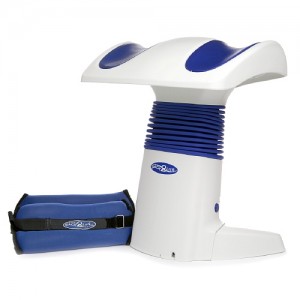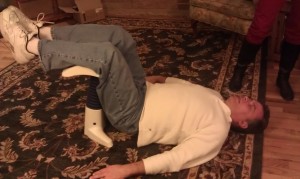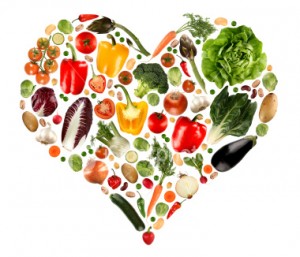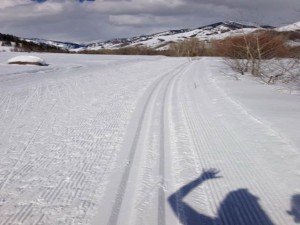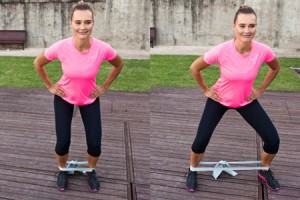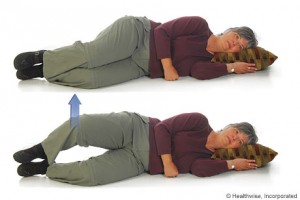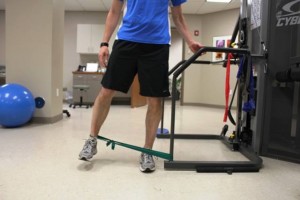Gentle Reader,
His long legs and narrow hips will soon carry him back to the gym. He will be back on the machines and lose the ‘love handles’ that have crept on from lack of exercise. The long process of identifying what caused the sciatica, the sharp pinching pain radiating down the leg, making his once strong stride impossible is over. It took months to identify a worn out hip as the culprit. He has a new one now.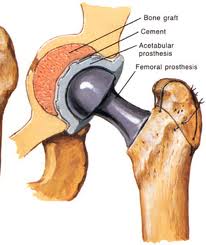
No more arthritis pain from that degenerated joint. His bones were healthy enough at 70+ to give the surgeon something to work with. Other joints–knee, shoulders, ankles–still hold. No advanced osteoarthritis everywhere.
Rehabilitation takes time. His spirit is good. He hates hurting or talking about hurting, so he will use the special chair lifters, the raised toilet seat, and take the procautions he must take to avoid damage to the new joint as the supportive muscles and tissue and tendons readjust to the trauma of surgery.
This world traveler will soon set off the alarms in the airport again. What joy. What thanksgiving.
Here are some tricks to rapid healing that his doctor may not tell him.
1. Lecithin is an oil that helps emulsify, make more liquid, substances that are sticky. After an incision or any wound to the body, our own mechanisms for repair rush to the task of healing. This healing process causes lots of swelling, too many repair cells for the space. To help bring this swelling down quickly, an emulsifier makes the spent repair cells easy to slough off through the normal waste stream. Several lecithin capsules a day, not just one or two.
Caution: not all lecithin is the same. Granuals or huge jars of capsules can go rancid quickly like any oil exposed to the air and light. I prefer a small jar with 180 capsules. There should be no smell of rancidity. A rancid fat causes more damage than you can imagine, so take care what you buy.
2. Alfalfa. This food for horses and cows is King of Vegetables and helps all systems in the body with its nutrients. In this case when the hip joint and surrounding tissue need held, it is there to do the job. Here are a few of Alfalfa’s contributions to our body:
- a great aid in digestion, aids in peptic ulcers, great diuretic and bowel regulator,
- effective barrier against bacterial invasion, anti-inflammatory, anti-histamine.
- Natural body deodorizer, helps support the natural ph of the blood .
- High in protein: 18.9% protein as compared to beef 16.5%; milk 3.3% and eggs 13.1%.
- Remember, muscles are composed of protein and the lack of it causes them to break down resulting in fatigue and weakness.
- After surgery, naturally replenishes joints and tissues with its healing properties.
How much Alfalfa? Lots and lots. It is like eating peas. Take a big spoonful and wash the tablets down with your favorite smoothie. Or make a hot tea. Or chew them up.
Caution: Not all Alfalfa is the same. Often genetically modified, the brand I use exclusively is grown by a very picky company’s organic farmers in Antalope Valley. The leaves are picked at sun-rise. No stems are included in the tablets. Open the bottle and take a whiff of the farm land where it grew.
If I had to pick only one supplement to take, it would be Alfalfa by Shaklee. Dr. Shaklee felt the same way.
Happy healing to my friend, the best travel leader I have ever known. And Happy Travels.
Fondly,
Betsy
Be Well, Do Well and Keep Moving,
www.GrandmaBetsyBell.com 206-933-1889





 Cartilage is 65 to 80 percent water, so staying hydrated is important for the health and lubrication of your joints. Maintaining proper hydration is even more important for individuals who suffer from gout. Water helps flush uric acid out of the body, and studies suggest staying hydrated may help prevent flare-ups. It isn’t necessary to count the number of glasses of water you drink in a day — the latest research suggests that if you take time to drink a glass whenever you feel thirsty, you’ll probably do fine. You are already drinking enough water, which is important for managing your arthritis. To spice things up, you might want to try flavoring your water with fresh fruit slices or drinking unsweetened green tea or herbal tea — there are so many delicious and fun varieties. And be sure to avoid sugary drinks like soda, sweetened water, fruit drinks, sweet tea, and froufrou coffee concoctions.
Cartilage is 65 to 80 percent water, so staying hydrated is important for the health and lubrication of your joints. Maintaining proper hydration is even more important for individuals who suffer from gout. Water helps flush uric acid out of the body, and studies suggest staying hydrated may help prevent flare-ups. It isn’t necessary to count the number of glasses of water you drink in a day — the latest research suggests that if you take time to drink a glass whenever you feel thirsty, you’ll probably do fine. You are already drinking enough water, which is important for managing your arthritis. To spice things up, you might want to try flavoring your water with fresh fruit slices or drinking unsweetened green tea or herbal tea — there are so many delicious and fun varieties. And be sure to avoid sugary drinks like soda, sweetened water, fruit drinks, sweet tea, and froufrou coffee concoctions. I know you don’t smoke, but I just wanted to share with you a few good reasons to stay smoke-free: Smoking delivers toxins throughout the body, causing inflammation and increasing the risk of arthritis. In one study, smokers were more than twice as likely to develop rheumatoid arthritis than people who didn’t smoke. In addition, researchers from a multicenter study reported in 2005 that smokers had a greater risk of osteoarthritis of the knee, possibly because smoking interferes with the body’s ability to repair its own cartilage. The bottom line is that staying smoke-free is a wise choice!
I know you don’t smoke, but I just wanted to share with you a few good reasons to stay smoke-free: Smoking delivers toxins throughout the body, causing inflammation and increasing the risk of arthritis. In one study, smokers were more than twice as likely to develop rheumatoid arthritis than people who didn’t smoke. In addition, researchers from a multicenter study reported in 2005 that smokers had a greater risk of osteoarthritis of the knee, possibly because smoking interferes with the body’s ability to repair its own cartilage. The bottom line is that staying smoke-free is a wise choice! you’re already there! Being overweight can put added physical stress on your joints, which can aggravate arthritis (particularly osteoarthritis) and increase your levels of pain. An unhealthy weight can also promote inflammation, which as I’ve mentioned is the root of arthritis. Another reason to keep eating right and exercising!
you’re already there! Being overweight can put added physical stress on your joints, which can aggravate arthritis (particularly osteoarthritis) and increase your levels of pain. An unhealthy weight can also promote inflammation, which as I’ve mentioned is the root of arthritis. Another reason to keep eating right and exercising! arthritis. It can help you lose or maintain weight, which reduces the overall stress impact on joints. Strong muscles can absorb shock from daily movements, keep joints stable, and protect against additional joint injury. Stretching and yoga can improve flexibility and range of motion and reduce joint stiffness. Swimming and water aerobics allow free movement without added stress on the joints. Walking is another manageable, low-impact form of aerobic exercise appropriate for most individuals with arthritis. All good reasons to maintain your active lifestyle!
arthritis. It can help you lose or maintain weight, which reduces the overall stress impact on joints. Strong muscles can absorb shock from daily movements, keep joints stable, and protect against additional joint injury. Stretching and yoga can improve flexibility and range of motion and reduce joint stiffness. Swimming and water aerobics allow free movement without added stress on the joints. Walking is another manageable, low-impact form of aerobic exercise appropriate for most individuals with arthritis. All good reasons to maintain your active lifestyle!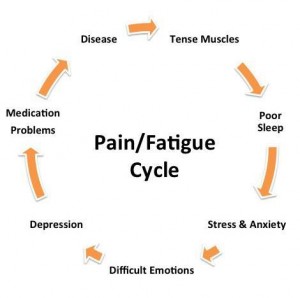
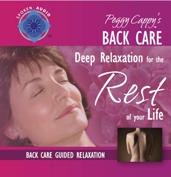 What I am sure about is increased pain and then the magical release from it. Here is the unexplainable magic. I have mentioned it to you several times in the past. It is a 20 minute meditation tape by Peggy Cappy about
What I am sure about is increased pain and then the magical release from it. Here is the unexplainable magic. I have mentioned it to you several times in the past. It is a 20 minute meditation tape by Peggy Cappy about 